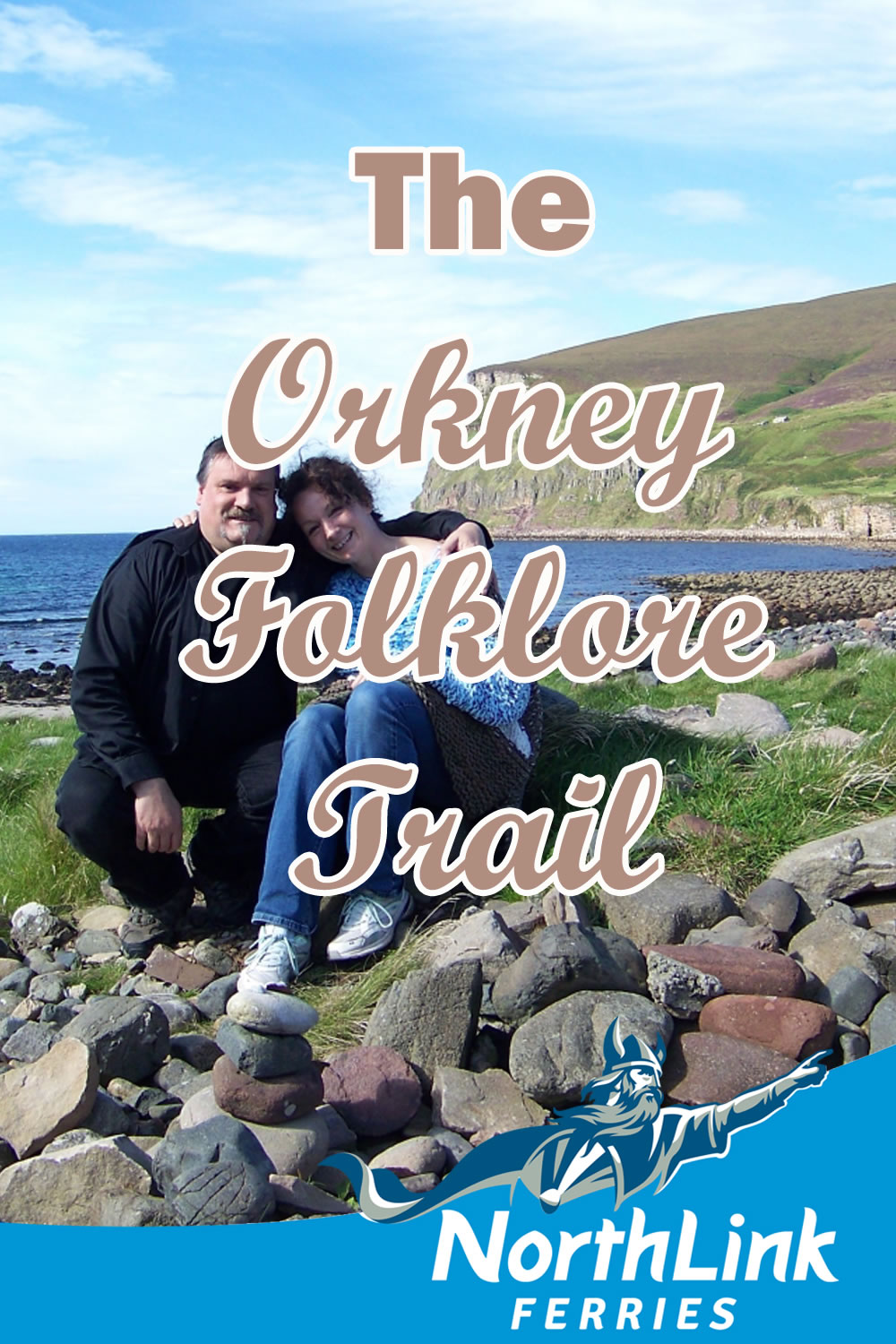The Orkney Folklore Trail
Tom Muir is an Orcadian storyteller and historian. His wife Rhonda is from America and she recently created the fantastic Orkneyology.com website, which is the ideal place to start when researching a visit to Orkney.
I think that if you want to understand a people you’ve got to understand their folk tales – I’ve always felt that.
In the summer of 2019 they launched the Orkney Folklore Trail App together; it’s a brilliant resource for discovering Orkney’s places and its fascinating folklore. NorthLink spoke to Tom and Rhonda Muir and asked them all about it!
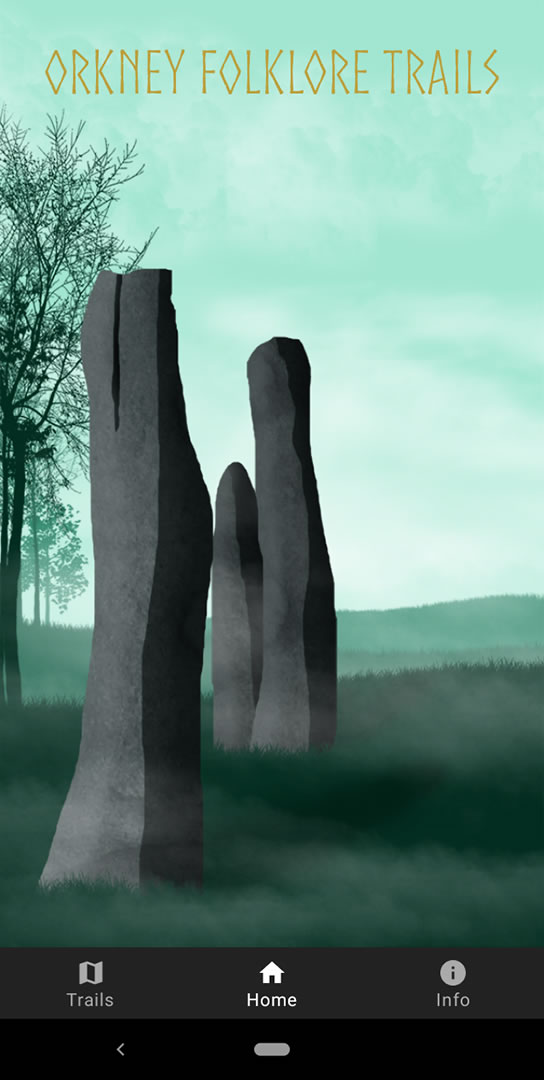
Q. How did Orkneyology start?
A. Rhonda: Orkneyology started because, living here in Orkney and having a family back in the USA, I wanted to build a web business as that would be location independent. We were also keen to make a website about Orkney. With Tom being an Orcadian and storyteller he had one way of looking at things. As an incomer I had a different way of looking at things. So we thought that, between the two of us we could speak to people who were interested in visiting or interested in the folklore from these two different angles.
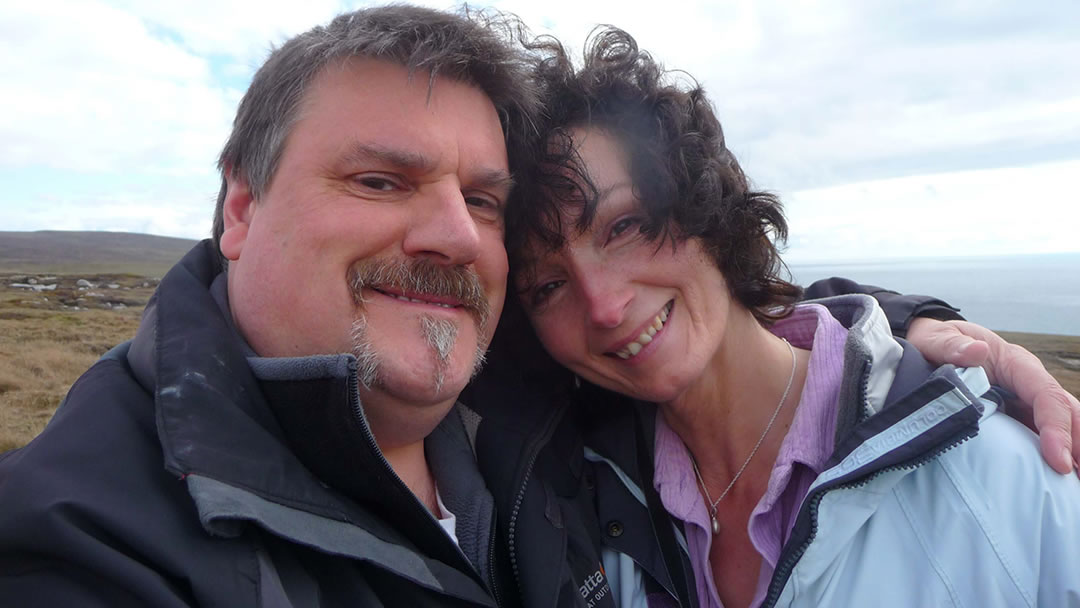
Q. Tom, how did you start out as a storyteller?
A. Tom: By accident, like everything in my life! I was working in The Orkney Museum and in 1994 Bryce Wilson wanted to do an exhibition about the 100th anniversary of the death of folklorist Walter Traill Dennison from the island of Sanday. It was the first exhibition I had done, and with it, we also published a book of his folktales through Orkney Press. Bryce came out of retirement as an artist to illustrate the book, and he was keen to illustrate another. So we went on to publish The Mermaid Bride: a collection of Orkney folk tales.
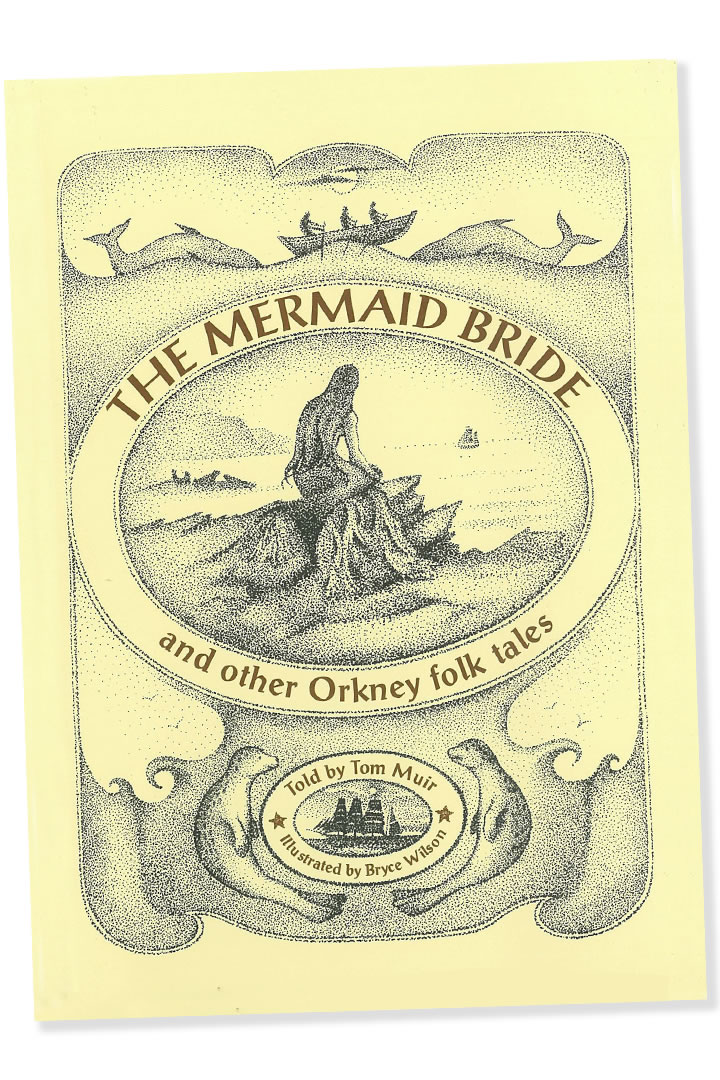
This led to me being asked by Aberdeen University to give some evening lectures in the winter on Orkney folklore. Rather than giving lots of long tedious descriptions I would deliver a brief description of a creature then tell a story. It grew from there; folk began to regularly ask me to give talks about Orkney folklore.
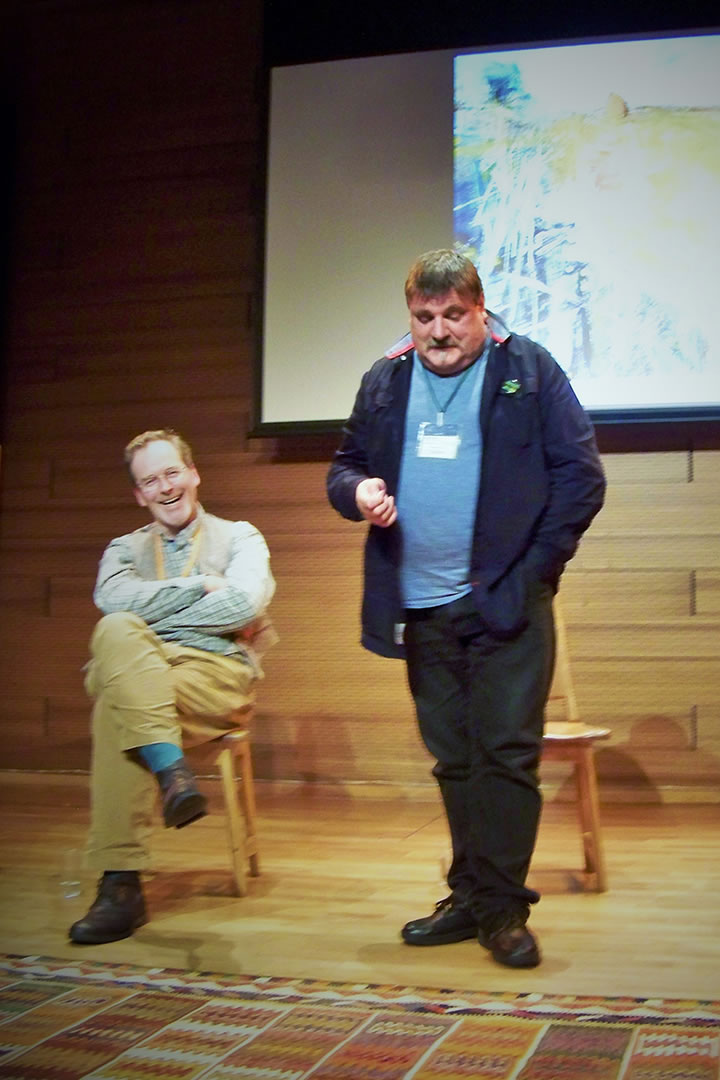
In 2000, Sheila Faichney from the Orkney Tourist Board set up an Orkney Storytelling Festival and I met Laurence Tulloch from Shetland. It was the first time I was aware that storytelling festivals existed. I found myself getting into that circuit. It wasn’t something I was expecting to do – it just grew organically really…
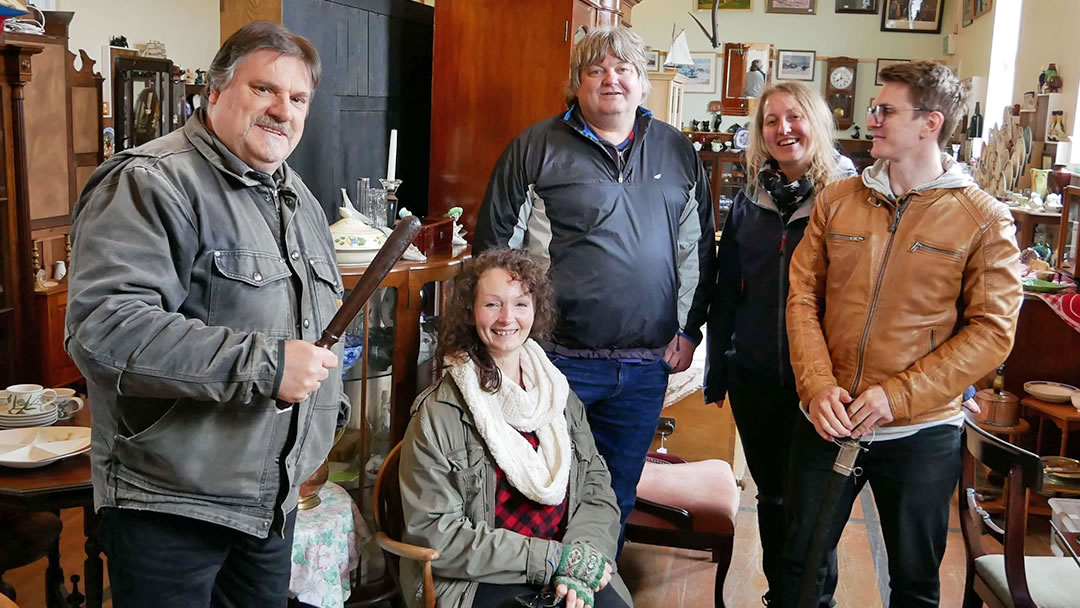
Q. Tell me about the Orkney Folklore Trail app. How did the idea come about?
A. Rhonda: Tom and I had the idea to do something similar when we first started the website but we didn’t have the technical ability to make it happen. So it was just an idea that we had simmering away that we might do one day. However we knew that we would need help to develop it.
Tom: I received a request for a meeting with Rachel Ironside of Robert Gordon University who was looking at developing an app about dark tourism. Robert Gordon University are researching alternative types of travel and hospitality. I thought by dark tourism that she meant dark skies and northern lights but I soon picked up that they meant ghost stories and murders, and creating an Orkney app and trail based around that!
However there’s not much that can be said about murders, and as for ghosts, you might be able to point at a house and say, “that house over there is haunted” but you couldn’t really say much more; it’s not a developed story. Also a lot of the ‘haunted’ buildings are private houses and you can’t send folk to somebody’s home.
Folklore was a better subject because you can interpret the stories in the landscape. There would also be more than one story when you arrive at a location.
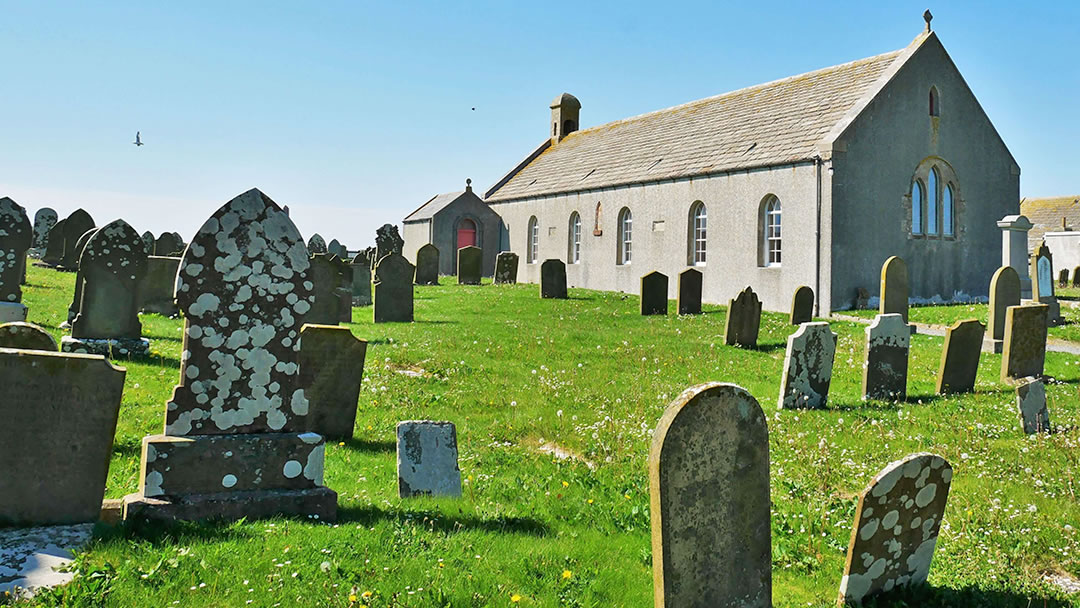
Robert Gordon University wanted to do this as an experiment in tourism which could potentially be rolled out across Scotland and used in other places, and they needed someone to host the app, and carry on hosting it for years.
They only had a limited time-scale for the project but wanted to keep studying it over a long period of time. They couldn’t keep it up themselves and they also couldn’t make any money from it either; it had to be a non-profit making scheme, which it is.
As Rhonda was looking at creating something very similar, I put them in touch with her and it all grew from there. I selected the stories and the sites; there’s no point sending folk to a beautiful viewpoint but there are no stories to be told there!
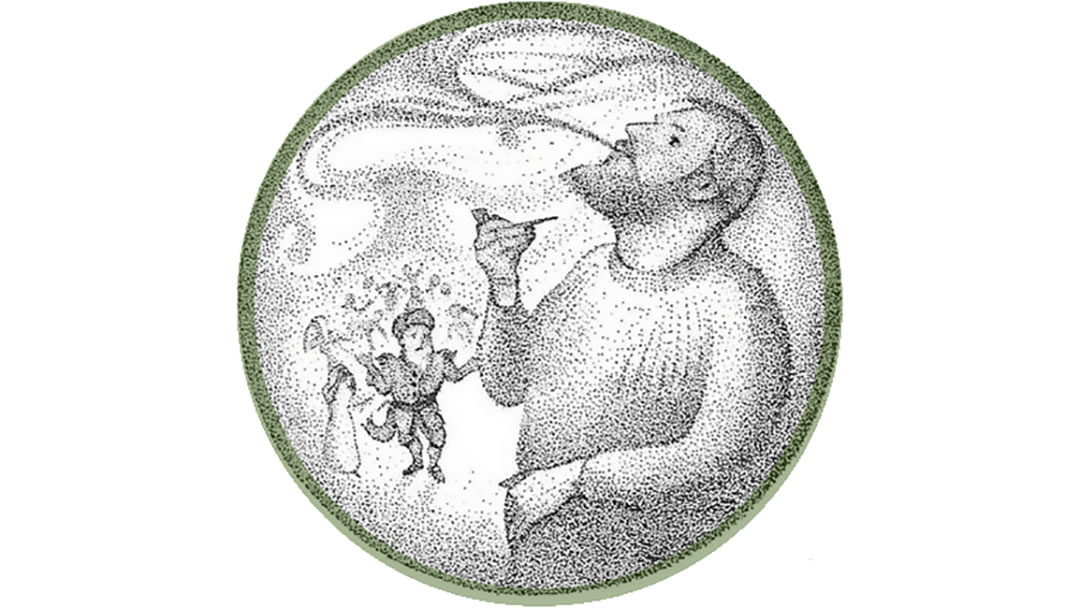
Rhonda: There’s also no point sending folk to places where there is nowhere to park! We had to select everywhere very carefully to make sure there were interesting stories at every location. We also tried to make the trail as convenient as possible for a day out. We let people know where they can get lunch, where the toilets are, and where the shops are in the countryside. We hope the trail will be a good experience for folk.
Tom: There are also lots of little out-of-the-way art galleries; super places to visit; that tourists or even local folk may not know about. We tried to use the Orkney Folklore Trail app as a way to see some of the more hidden aspects of Orkney; folk can take a small detour to see some fascinating things!
Rhonda: The main aim with the Orkney Folklore Trail app is that; if you are visiting somewhere that is obviously beautiful like Yesnaby, but don’t know anything about the place, all you will see is the scenery. Whereas, if folk know some of the stories about the people who lived there or the folklore associated with the place, it makes a visit much more meaningful.
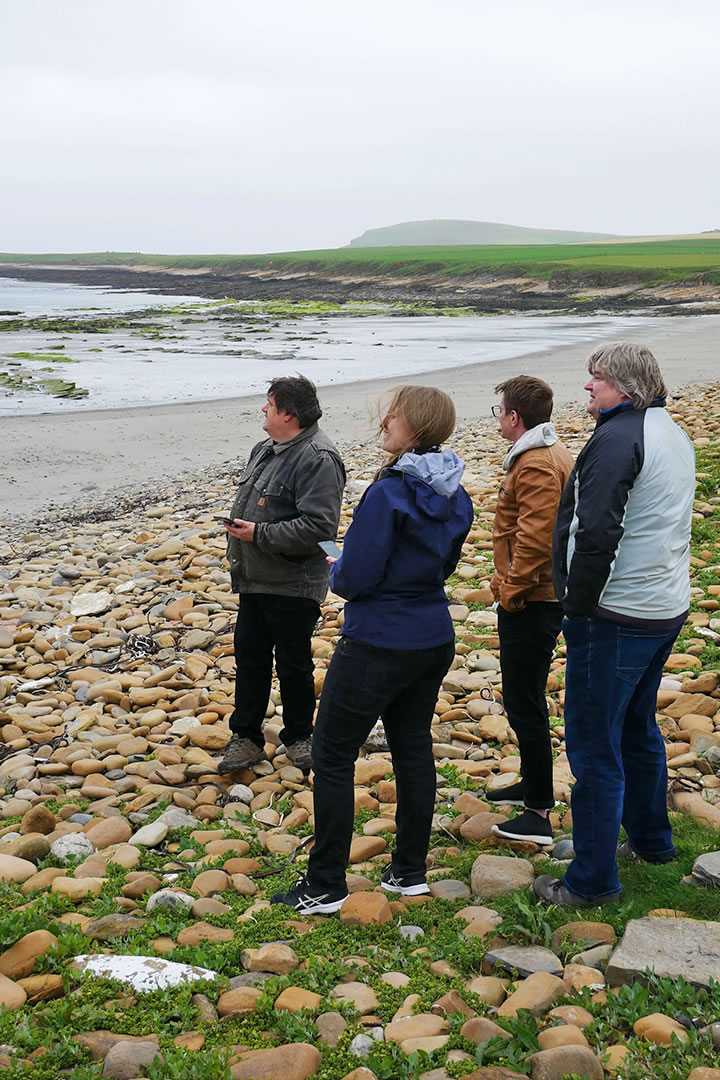
Q. So, getting into the details of how the app works; there is lots of interesting information on it; are there voice recordings on the Orkney Folklore Trail app too?
A. Tom: Yes, that’s what it mostly is – me telling a story from the place.
Rhonda: It’s like having Tom in your pocket, your own storytelling tour guide out with you as you explore Orkney. You’ll find an introduction for each location is on the Orkneyology website; but to pick up the stories you’ll have to actually go to each location. It also gives users a taste of each site before you visit, so if people don’t have time to do the whole trail; they can pick out which ones they’d like to see!
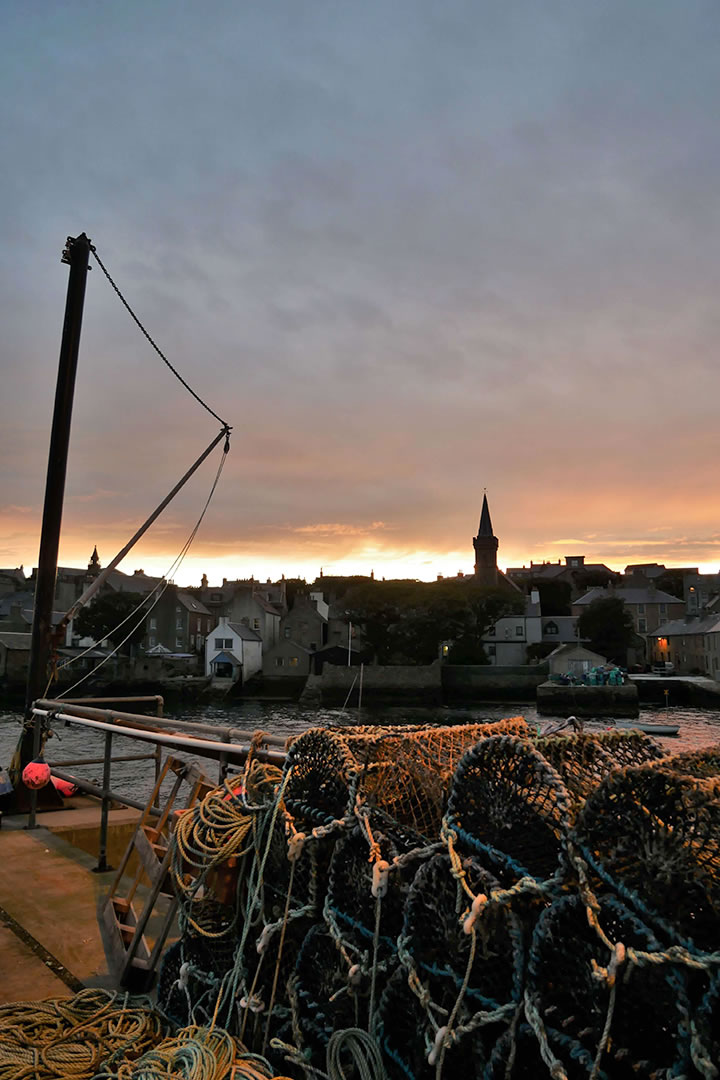
Q. So how does the App know that you’ve gone to the site?
A. Rhonda: It works by GPS and when you get within a certain distance it then unlocks the stories.
Tom: You can’t just sit at home and listen to all the stories. You have to go to the site and then it unlocks. However each location’s stories remain unlocked afterwards, so you can listen to them again.
Rhonda: When folk go home they’ll have 40 stories or so to take home with them! And if they manage to complete the whole trail there’s a bonus story that will unlock at the end!
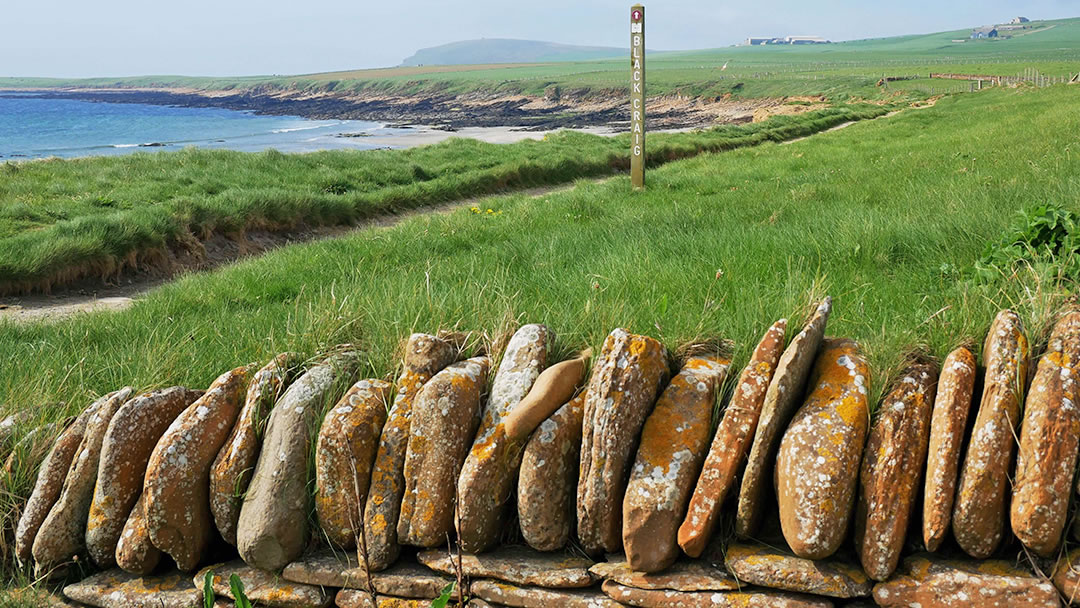
Q. Which locations are featured on the trail?
A. Tom: It’s a circular route of the west mainland which starts off in Stromness. That said, you don’t have to do the Orkney Folklore Trail in the order we have it in the app. It unlocks within a short distance of the place regardless of what order you choose to do it in.
However, it starts in Stromness with a couple of peedie stories, then proceeds to Warbeth. I have suggested people park up at the cemetery and walk down the road to the beach (the car park at the beach is peedie and there is a single track road on the way down which could cause issues).
The trail also features Yesnaby and the Bay of Skaill. Then there is the Stone of Quoyboon in Birsay, which is definitely worth a stop as it’s a beautiful stone and there’s a good story about it. It’s right next to Orkney Antiques (which was previously the community hall) so there’s plenty of space to park. We encourage folk to stop in at the antique shop, too, as a worthy detour.
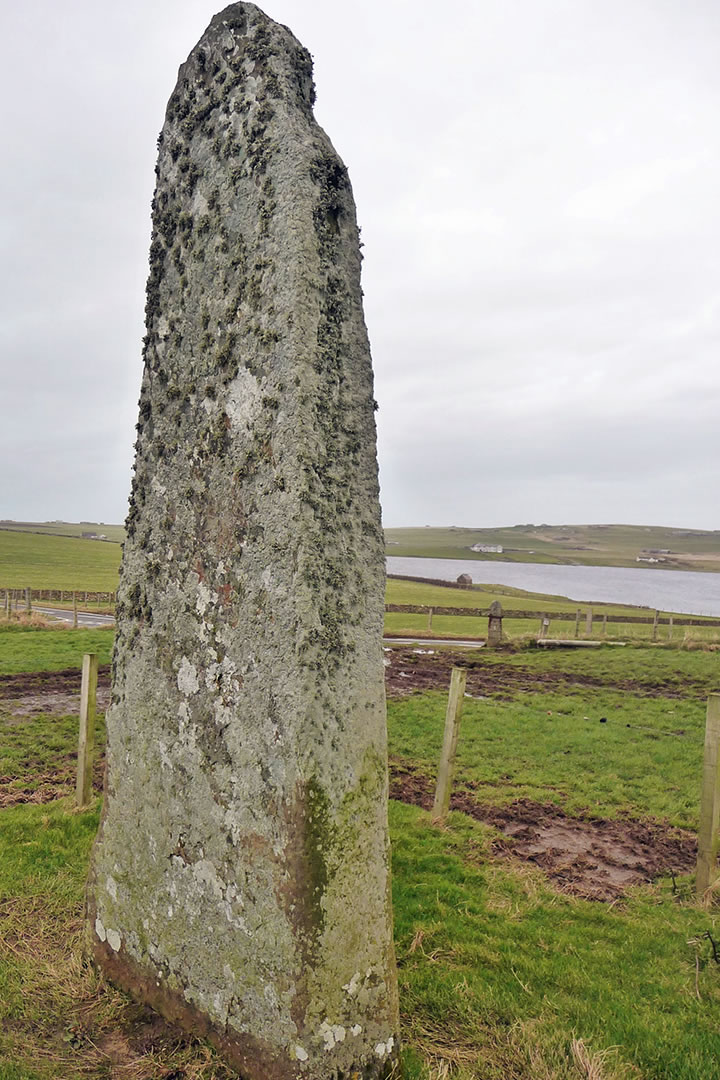
Then the trail goes to Birsay village. Afterwards there the drive to the Broch of Gurness, where you’ll pass a disappearing island around Eynhallow. Then you travel on the hill road to Dounby stopping at Click Mill, where there are a few fairy stories. If you go over the Staneyhill road you’ll reach the viewpoint in Harray which looks across to the Ring of Brodgar. Then there’s a stop at Unstan tomb which again has a good story. Then you get your bonus story!
Rhonda: We should also mention that we were fortunate enough to be able to use Bryce Wilson’s illustrations for the folktales. The photographs are mine as we wanted to give some visual clues as to the places we were telling folk to go to. However we also tried to keep the app from being too visual; we want people to experience the place and the stories instead of staring at their phones! The stories are tied to the landscape and we’re proud to bring people out to these beautiful places.
Fionn McArthur recorded some fiddle tunes for the app, so it’s a great way of hearing traditional Orcadian tunes about folklore as well. Some of Fionn’s tunes are his own compositions. He recorded music about mermaids, fin folk, witches, selkies and shipwrecks.
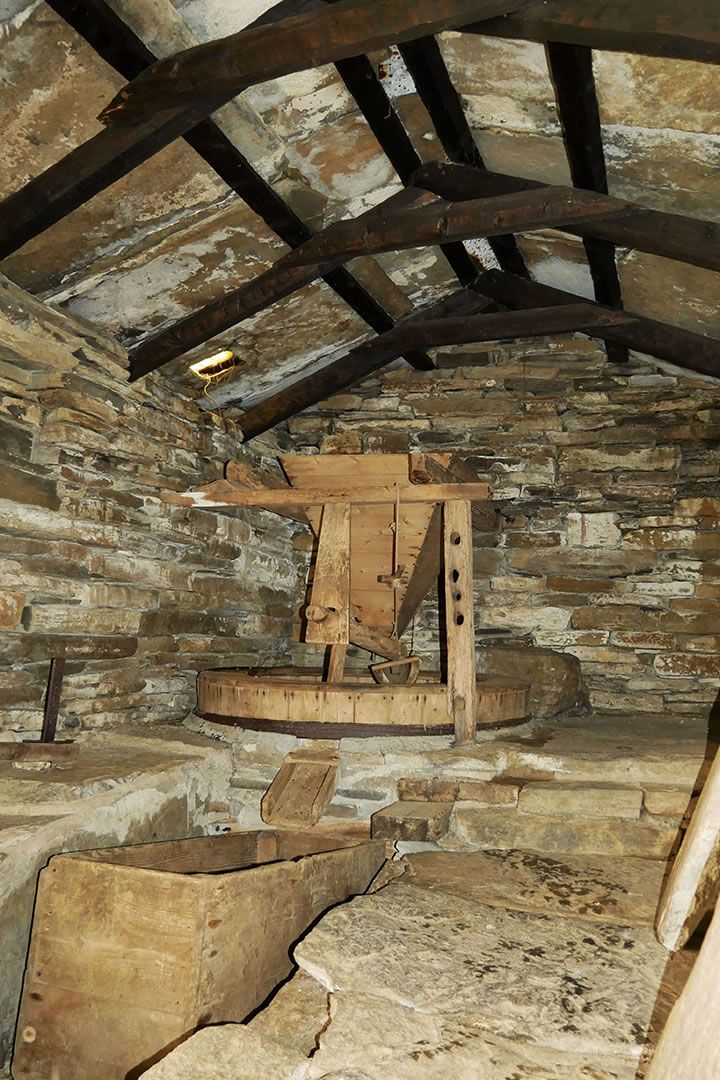
Q. Do you have a personal favourite Orkney location covered by the app?
A. Rhonda: I think for me it would have to be Yesnaby because it’s just so astonishing and dramatic. Also, if you start from the car park you can go in either direction and walk for miles and miles and see more astonishing sights. If you go north you will see a broch and seastack and you could walk all the way to Skara Brae and beyond! I walked in the opposite way; south past Yesnaby Castle, and on to the Black Crag and all the way back to Stromness with some of my kids a couple of years ago and that was just a wonderful day. Just for the sheer sense of being out in Orkney without towns and traffic and other people, it’s just you and the land. For me, Yesnaby is my favourite.
Tom: I think that it’s probably Click Mill for me because it’s right out on the farmland, and I’m a farm boy! It’s a lovely peedie site that is very under visited. It has some fabulous stories that relate to the person that built the mill and to a previous mill that was on the site. There are fairy stories set in that landscape and it’s just a lovely beautiful and quiet place. The combination of stories and setting makes it very special.
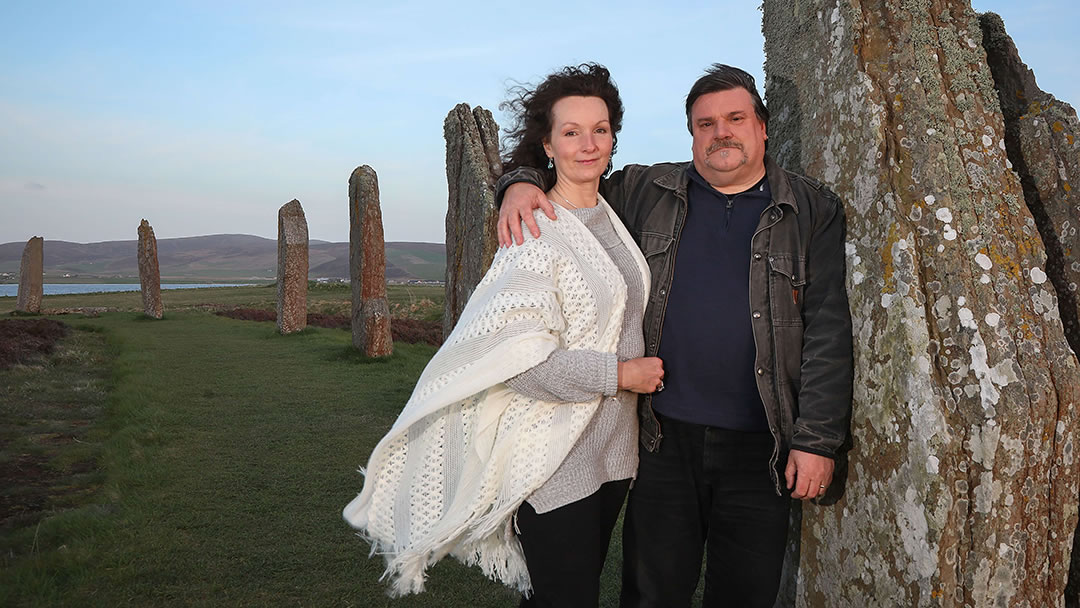
Q. It’s great that you’re introducing visitors to Orkney’s folklore in this way. Why do you think Orkney’s folklore is so important?
A. Tom: I think that if you want to understand a people you’ve got to understand their folk tales – I’ve always felt that. It reflects the character of the people and also in the technical age we still need a bit of magic on our lives and that’s what this supplies; it’s a connection with your ancestors. Also it’s just good entertainment!
Rhonda: And even though we are using modern technology to get the stories across, it is still low tech; it’s just Tom telling a story that people would have told about that place.
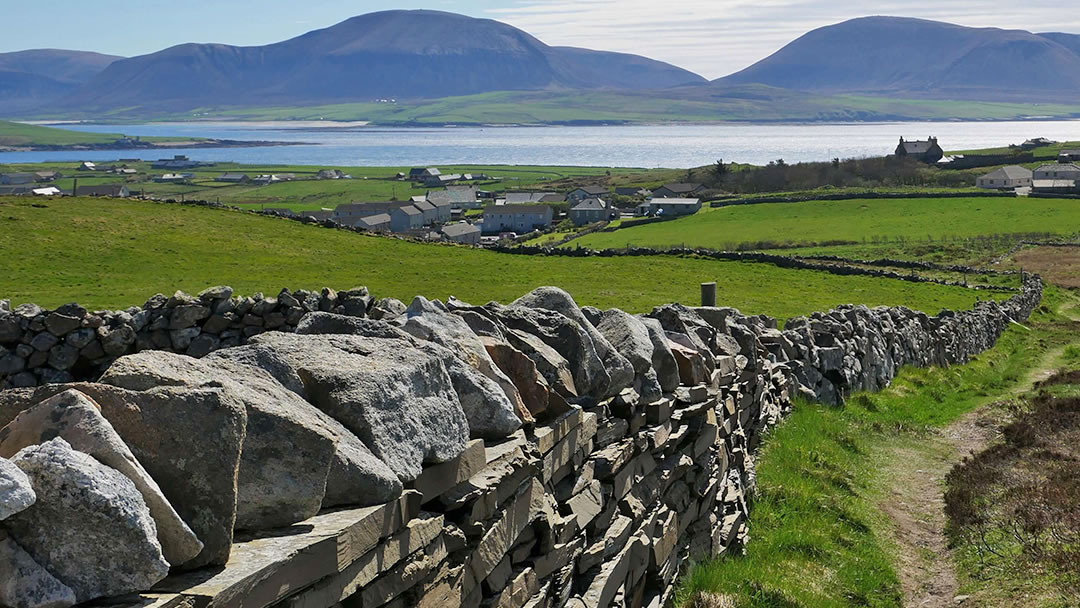
Q. May I ask what your favourite Orkney tale is?
A. Rhonda: Mine is easy. It’s not just one particular tale but a genre of tales; the selkie tales. I have loved them since I was a child but that’s also what brought me and Tom together. I was writing a book based on selkie folklore and I started researching where I should set it to begin with. I found that the tales seem to have come from Orkney, which was a place I was unfamiliar with. I looked it up began my research, getting a lot of information from the library archive, and they sent me to Tom! So the selkie tales are my personal favourite because I love them but also because that’s part of our story.
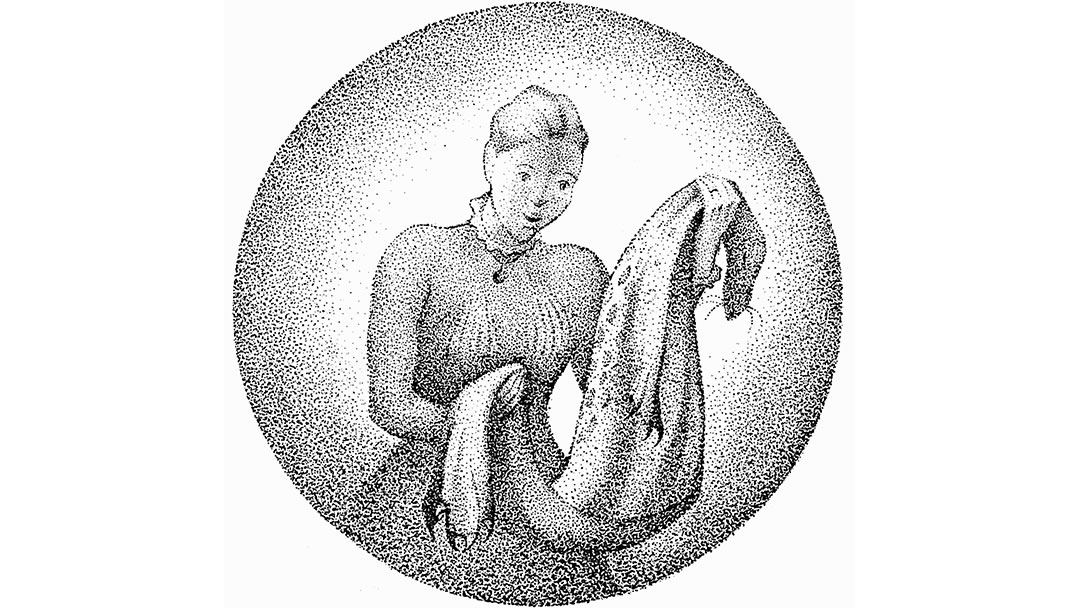
Tom: I quite like the stories of the Fin folk and the vanishing islands because I have seen one!
I was at the house where I was born in Tankerness, visiting as an adult with two of my brothers and out there for Sunday dinner. We went for an afternoon walk along the seashore just below the main runway of the airport and we were looking north.
There was an island between Shapinsay and Stronsay where there shouldn’t have been an island and it had a big house on it with a big arched doorway.
One of my brothers had a pair of binoculars with him and he looked at the island through those but didn’t recognise it at all. We knew it shouldn’t be there and knew that it was a mirage; it was a humid summer afternoon. Slowly the island started to vanish from the bottom west corner and lifted up out of the sea, and the east side did the same; it very slowly melted away.
Now the mirage was probably a piece of Sanday – the house may have even been Garemount which is a ruin but does have a curved doorway. I wouldn’t have recognised it at the time, I would recognise it now but this was in the early eighties and I wasn’t all that familiar with Sanday then. I suspect that’s probably what it was but you can see why people told stories about the magical, invisible island of Hildaland; the summer home of the Finfolk. Funnily enough the name Hilda comes from Old Norse and is still used in Norway; Hildur is a mirage at sea, an island at sea seen in the shimmering haze.
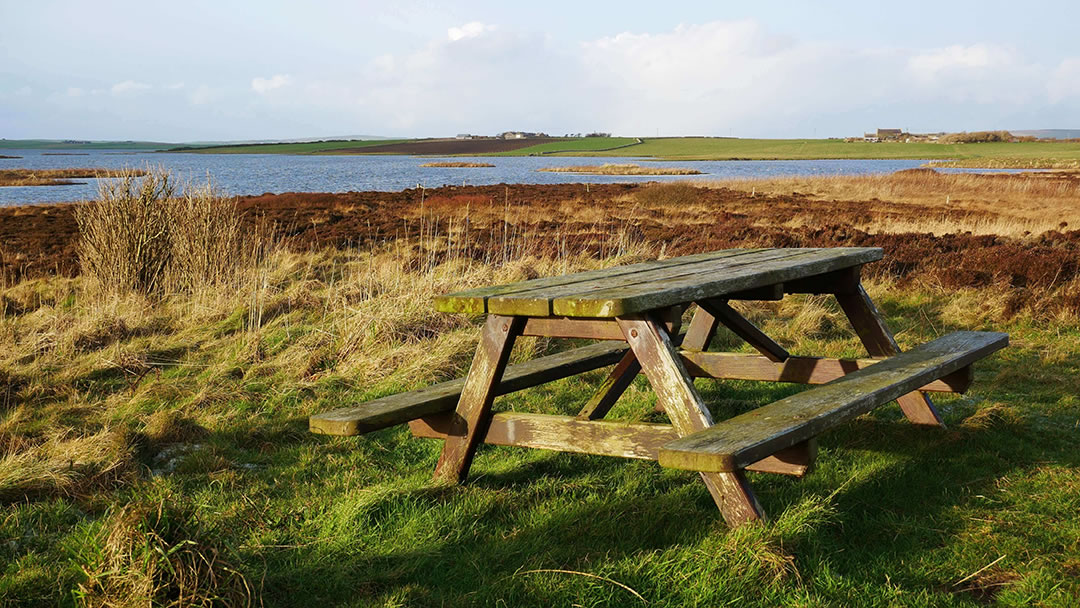
Q. You mentioned that the app could be developed for other areas of Scotland?
A. Rhonda: We probably wouldn’t be doing that ourselves as we don’t have the expertise as we don’t know other places in Scotland quite so well. However, Robert Gordon University might very well develop the app for other areas.
Tom: I would love to see it on other Scottish islands. I would love to see it expanded in Orkney as well so that it took in other areas. However we did the West Mainland first because people did a good job of recording the stories there.
Sanday would be an obvious one because Walter Trail Dennison was recording stories there. If you’ve got an island that doesn’t have stories it’s not because they didn’t have any. It’s because no one thought they were important enough to write down or remember. The stories die out and that happened with a lot of the islands.
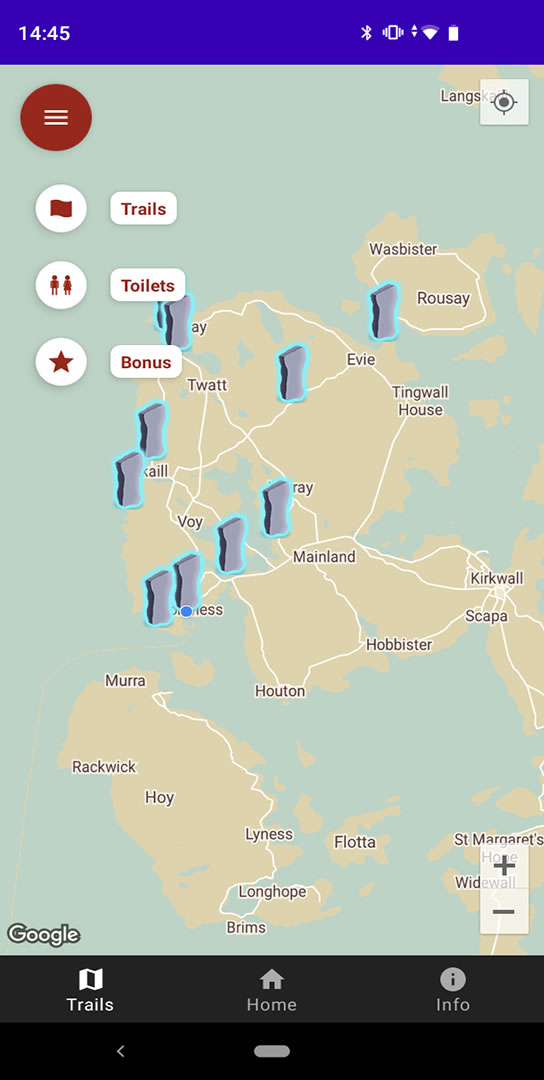
I would like to see the app developed in other areas with local storytellers who know the place. Know the landscape and stories and how to tie it together.
Rhonda: But in Orkney we do hope to add more trails to the app in the future. We originally had a tour around the whole of the Orkney mainland planned but the team decided that was too much to cover for a short tour. It would be great to expand into other areas of the mainland and some of the other islands.
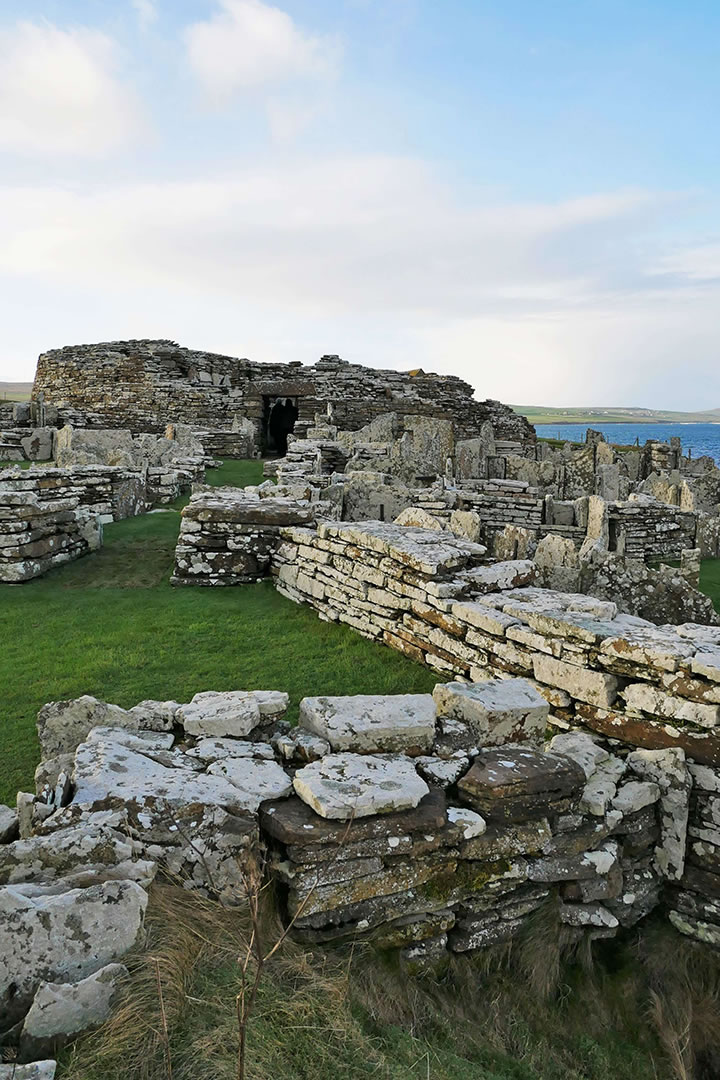
Tom: It’s possible to do the tour in a day – we tested it to make sure it worked and it took us about four hours. But that was just going from one site to the next – when you are at places like the Broch of Gurness, for instance, you would hope folk would want to explore the Broch whilst there too. So it’s pretty flexible – it can take between four hours and two days depending on what you want to make of it really. And if you want to go and visit a lot of the galleries, shops, historic sites, and take in the scenery, you could really turn it into a long adventure over a good few days rather than just dashing from one site to the next.
Rhonda: We also hope that this will open up expanding the trail idea. Other people in the community have expertise in other areas and could develop their own trails for the app. The possibilities are endless; the Orkney wartime trail, the Orkney archaeology trail, the OrkneyInga Saga Trail, or expanding on the Orkney arts trail. In future it would be wonderful if we could make the app adapt to different people’s interests.
The Orkney Folklore Trail App is available to download from the Google Play store (no Apple version available yet) and more information can be found at https://www.orkneyology.com/orkney-folklore-trail.html
 By Magnus Dixon
By Magnus DixonOrkney and Shetland enthusiast, family man, loves walks, likes animals, terrible at sports, dire taste in music, adores audiobooks and films, eats a little too much for his own good.
Pin it!
